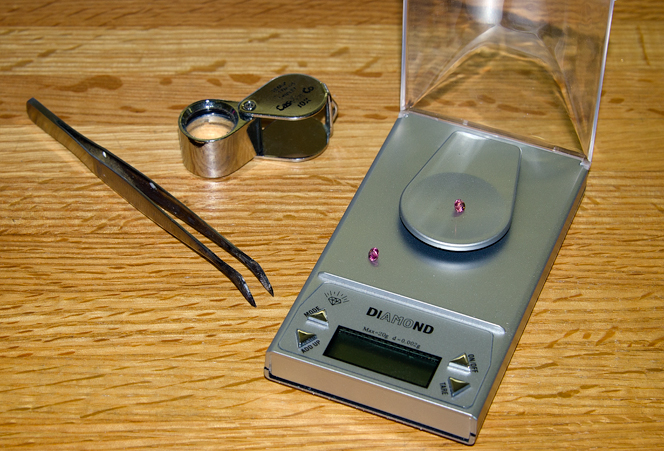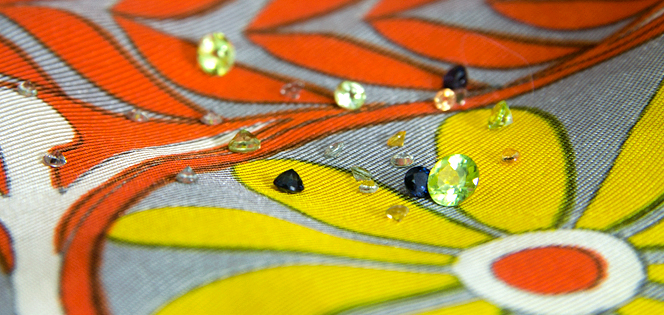Have you ever stopped to wonder why gems like peridot come in just one color while sapphires, though primarily found in blue, come in virtually every color with endless shades of each? That is because the color of some gemstones is derived from elements that are part of their essential chemical composition while others are colored by trace elements which become included in their chemical make up. Gemologists distinguish the two by categorizing gemstones as either allochromatic or idiocrhomatic. Allochromatic stones, like the sapphire get their color from trace elements while each essential component of the peridot combine to create it’s characteristic and quite striking chartreuse hue.
My favorite allochromatic gem is sapphire, a variety of corundum, which is the second hardest material on the planet earning a 9 on the Mohs scale of gem hardness. That means it is durable enough to withstand almost anything and it has one of the largest assortment of colors with rich blues, brilliant pinks and even occurs with various phenomenons like color change, and asterism (the illusion of a star atop a stone created by titanium oxide inclusions). Any color other than blue is considered a fancy sapphire. The only color sapphire does not come in is red. When corundum occurs in red it is then classified as ruby. I have often wondered why this distinction was made while others were not. Interestingly enough, one major difference separating ruby from pink sapphire is the price it demands. Pink sapphire can vary in shade from a light baby soft pink to a vibrant florescent hue. Because there is so much natural variation in color, the line between pink sapphire and ruby can be a gray area and the standards do vary from country to country. Gem dealers will often try to pass their darkest pink stones off as rubies to increase their profitability.
Because colored stones can vary in shade quite a bit, gemstone identification can sometimes be tricky. For example, pink sapphire and pink tourmaline can exist in the same shades of pink. There are many differences between the elements, some easier to determine than others. Clearly trying to scratch a stone, to make a guess as to it’s Mohs hardness would not be a viable option. Visually both stones will handle the light in a slightly different way, though this subtle difference would be lost on an individual who does not work with gemstones on a daily basis. The refractive index (RI) of a stone is a scientific numeric figure based on how light is bent when traveling through a gemstone. A refractometer is used to determine the RI of a gem and would show quite different results for the corundum and tourmaline. Although, in this particular case between the pink sapphire and the pink tourmaline one of the most obvious and easiest factors that distinguish the two stones is their weight difference. Sapphire has a higher specific gravity so comparing two stones of a similar size and proportion will have drastically different results when weighed.
Please note, gemstone identification should only be preformed by a trained gemologist for accurate results.
Gemstone color is a broad topic with numerous facets to explore with topics ranging from basic features present in every stone to rare phenomenal gems that exhibit some unique and stunning characteristics.

